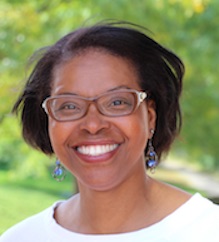
by Dr. Fari Nzinga (editorial support from Dr. Regina Stevens-Truss)
“The U.S. Surgeon General is the Nation’s Doctor, providing Americans with the best scientific information available on how to improve their health and reduce the risk of illness and injury. The Surgeon General oversees the U.S. Public Health Service (USPHS) Commissioned Corps, an elite group of over 6,000 uniformed officers who are public health professionals. The USPHS mission is to protect, promote, and advance the health of our nation.”
Today, the public looks to this office for information regarding the state of COVID-19. But did you know that the first Black U.S. Surgeon General was sworn in on September 8th, 1993 and was a woman (only the second woman to head that office since its inception in 1871)? It’s a fact! Dr. Minnie Joycelyn Elders was sworn in by President Bill Clinton as the fifteenth Surgeon General of the United States. (See a list and history of the previous Surgeons General)
Minnie Joycelyn Elders was born August 13, 1933 to sharecropping parents (one of eight children) in Arkansas. While she would grow up to be a renowned physician and public advocate, it wasn’t until she was 16 years old that she met her first doctor! Elders and her siblings worked as field laborers and domestic servants and pooled their money together in order to pay for her to attend the Historically-Black liberal arts college, Philander Smith College, in Little Rock. Finding her options severely limited in Jim Crow Arkansas, Elders joined the Army and trained in physical therapy at the Brooke Army Medical Center at Fort Sam Houston, Texas. After discharge in 1956, she took advantage of the G.I. Bill and enrolled at the University of Arkansas Medical School.
Elders began her studies for a career in medicine one year before the Little Rock Nine African American students enrolled in Little Rock Central High School in 1957 following the Brown v. Board of Education Supreme Court decision that declared segregated schools to be unconstitutional. Their enrollment precipitated the tumultuous events that would come to be known as the Little Rock Crisis, in which the students were initially prevented from entering the racially segregated school by Orval Faubus, the Governor of Arkansas. Elders was forced to endure segregated accommodations during her time in medical school as one of very few Black and/or female students on campus.
Elders did an internship in pediatrics at the University of Minnesota, and in 1961 returned to the University of Arkansas for her residency. In no time, Elders became chief resident in charge of the all-white, all-male residents and interns. She must have endured countless instances of racial abuse, sexual harassment, and elitist entitlement. But she didn’t let that deter her! Dr. Elders went on to earn her masters degree in biochemistry in 1967; became an assistant professor of pediatrics at the university’s Medical School in 1971; and ranked as a full professor by 1976. A mere 2 years later, in 1978, Dr. Joycelyn Elders was the first person in the state of Arkansas to become board certified in pediatric endocrinology. Her research and clinical practice focused on mitigating the effects of pregnancy on diabetic girls and young women. As such, Dr. Elders worked with her patients to educate them on their sexual and reproductive health, and offered potentially life-saving family planning resources and information. Dubbed the “condom queen,” she was known for her positions on ensuring sex workers’ access to reproductive health care and making condom available to all public high schoolers.
Using her platform as Surgeon General during a period of “tough on crime” policies that would facilitate the mass incarceration of poor, Black, and other racialized people largely for low-level, non-violent drug offenses, Dr. Elders was ahead of her time in saying: “I do feel that we would markedly reduce our crime rate if drugs were legalized.” President Clinton, however, did not support her position and foreclosed the possibility of a national conversation around drug legalization. One year after her controversial comments, Joycelyn Elders was forced to resign from her Surgeon General post by the Clinton administration. Not long thereafter, in 1996, Elders (with David Chanoff) published her autobiography, Joycelyn Elders, M.D.: From Sharecropper’s Daughter to Surgeon General of the United States of America.
In 2014, former U.S. Surgeon General Joycelyn Elders teamed up with the Program in Human Sexuality and the Institute for Sexual and Gender Health at the University of Minnesota Medical School to advance comprehensive science-based sexual health education by creating the Joycelyn Elders Chair in Sexual Health Education. The position supports research, scholarship and pedagogy that aims to create comprehensive life-long sexual education curricula, to increase the number of health care providers trained in sexual health care, and to expand scientific research in sexuality education.
In 2020 she was honored by TIME Magazine as one of the historical 100 Women Of The Year.
Regina Stevens-Truss, Director of the HHMI Inclusive Excellence grant & Professor of Chemistry & Biochemistry

